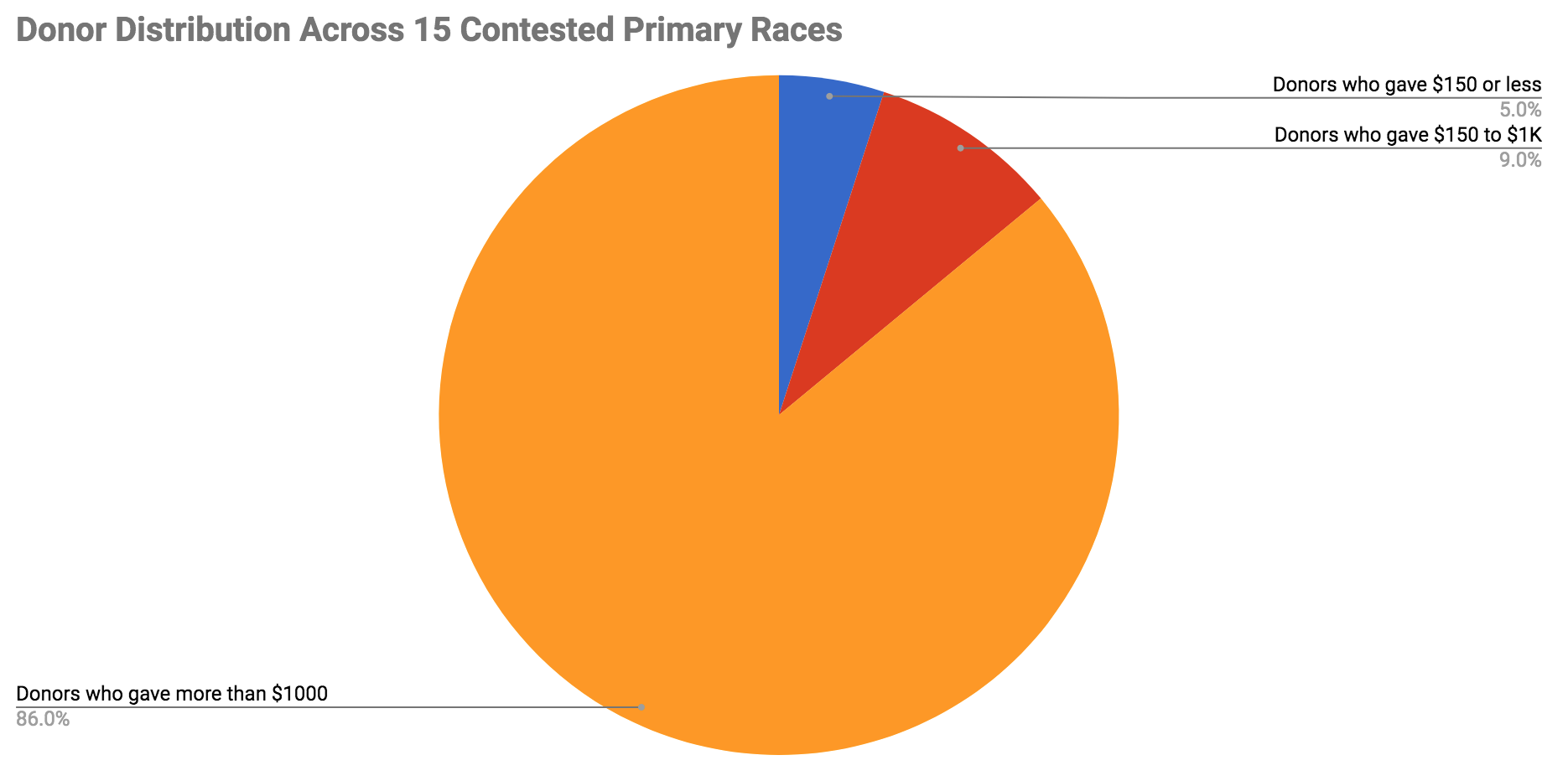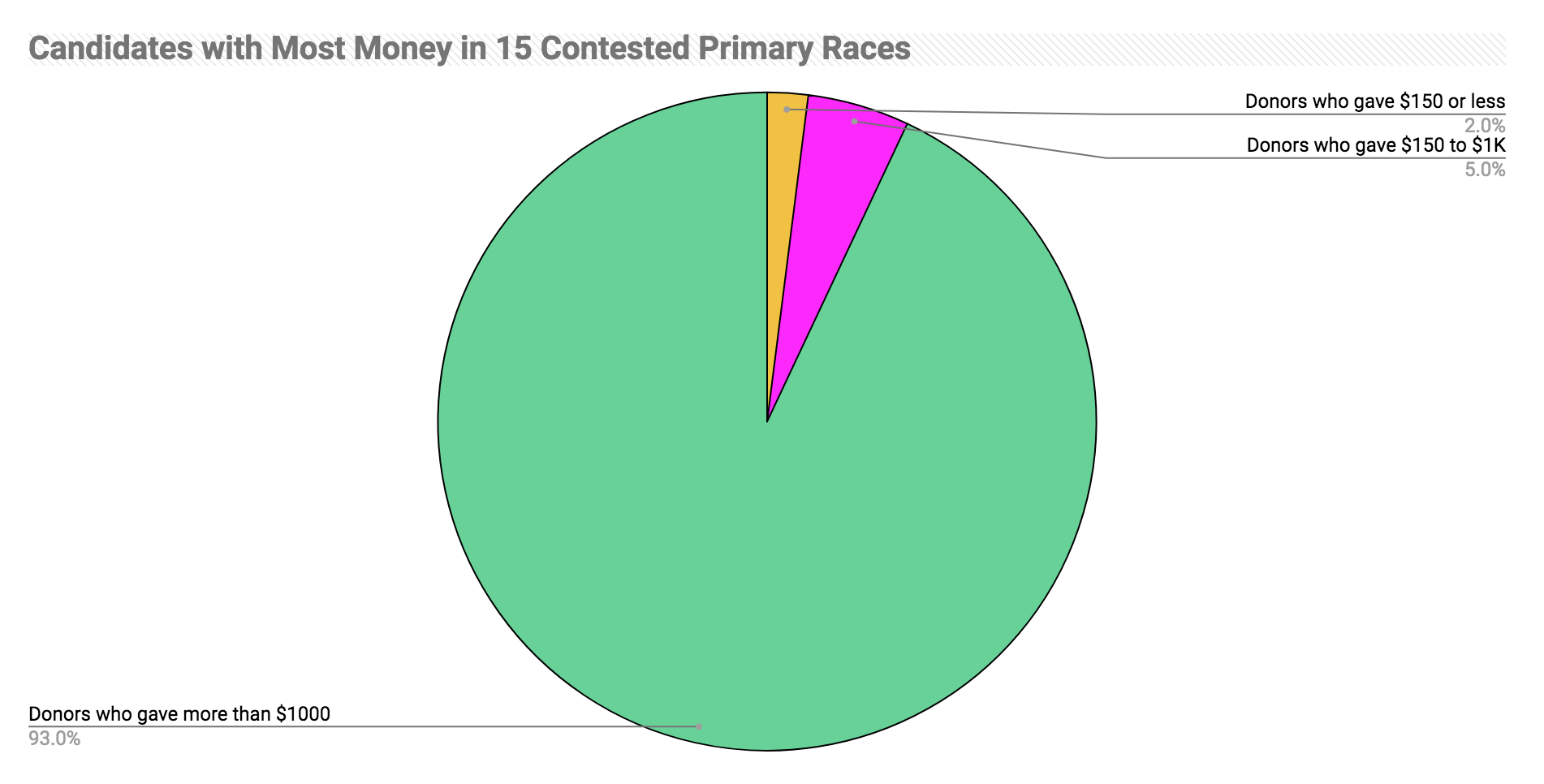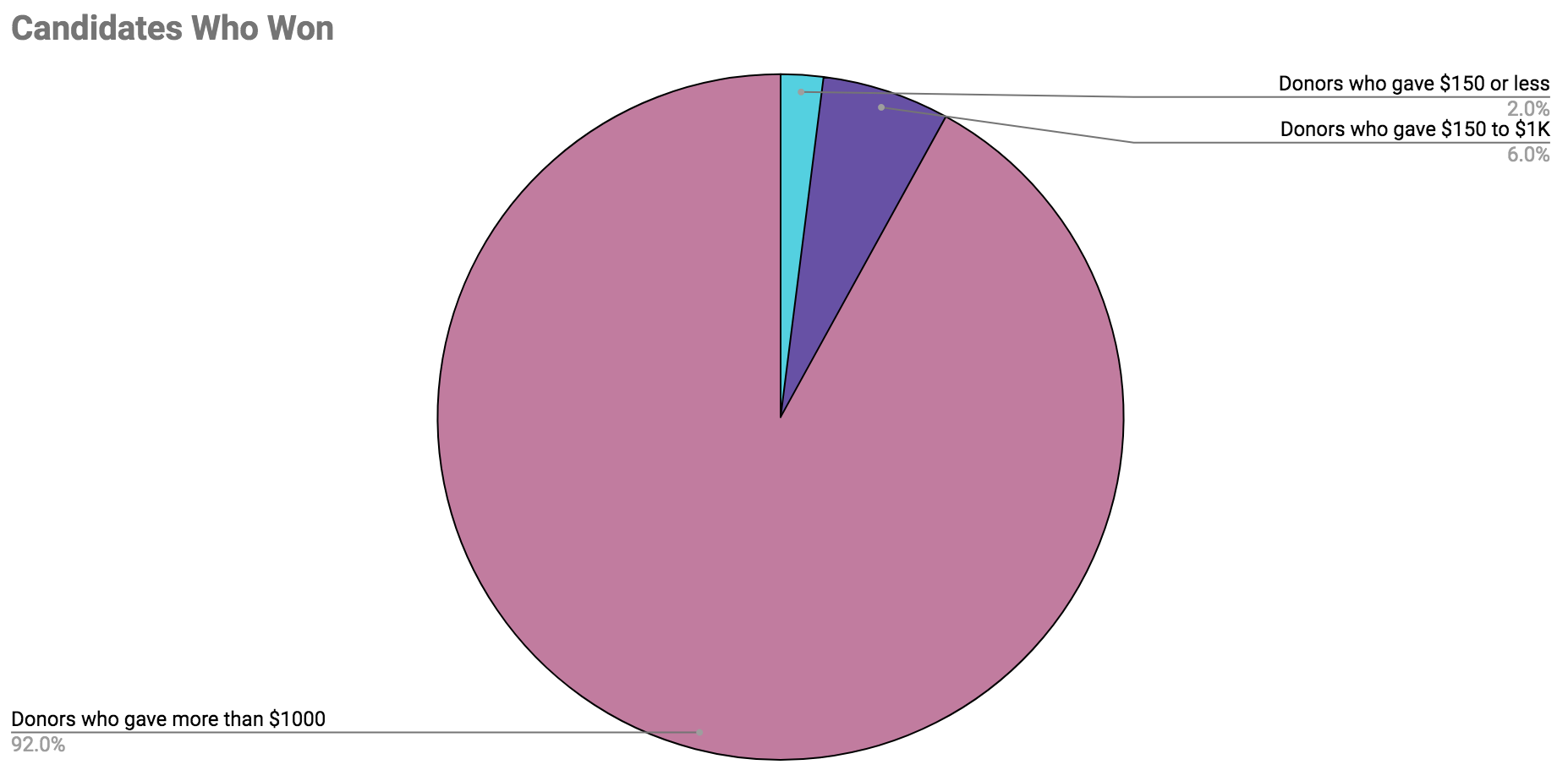Big Money in Smaller Races, Part II
A second look at the influence of big money in state legislative primaries: campaign contribution analysis of 15 state House races.
With the news about today’s subject matter hearing for HB 5531—the bill introduced by Representative Kelly Cassidy in the Illinois House of Representatives to create a statewide Small Donor Match program—Illinois PIRG Education Fund decided to expand its previous analysis on campaign contributions to more State House races.
This analysis relied on campaign contribution disclosure filings to determine the reality of the “unofficial” primary that did not end on March 20: the “money primary.”
“Money primary” refers to the increasing importance placed on a candidate’s access to major money in fundraising for their campaign in order to stand out from the rest of the pack—and sometimes, just to remain part of the pack.
While the scale of campaign financing is an important part of any election analysis, it is only part of the story. Just as significant, is the type of donors contributing to these staggering numbers. Not only is more money going into elections, but campaign finance is increasingly dominated by “big money” from a small group of wealthy donors.
And with an unprecedented number of state legislators in IL not seeking reelection this year, there are more contenders than ever competing for the donations of this wealthy elite. With that in mind, Illinois PIRG Education Fund revisited its look at campaign contributions in state races, this time focusing only on just State House districts, with a more expansive list of races.
We found that in the 15 contested party primaries analyzed, 86 percent of money raised came from donors giving $1,000 or more, while only 5 percent came from donors giving less than $150.

Candidates with the most money in the contested races of these 14 districts received 93 percent of their campaign contributions from donors giving $1000 or more, and just 2 percent from donors giving $150 or less.

While the candidate with the most money does not always win, a parallel pattern of data was apparent when examining the campaign contributions of only the candidates who were ultimately victorious in their primary contests. Candidates who won in these 15 races received 92 percent of their campaign funds from big donors giving $1,000 or more, and only 2 percent from donors giving $150 or less.

Finally, 12 of the 15 contested races in the 14 districts were won by the candidate with the most resources. All 3 of the races analyzed where the candidate with less money ultimately won took place in southern Illinois.
*See full report for more details & tables.